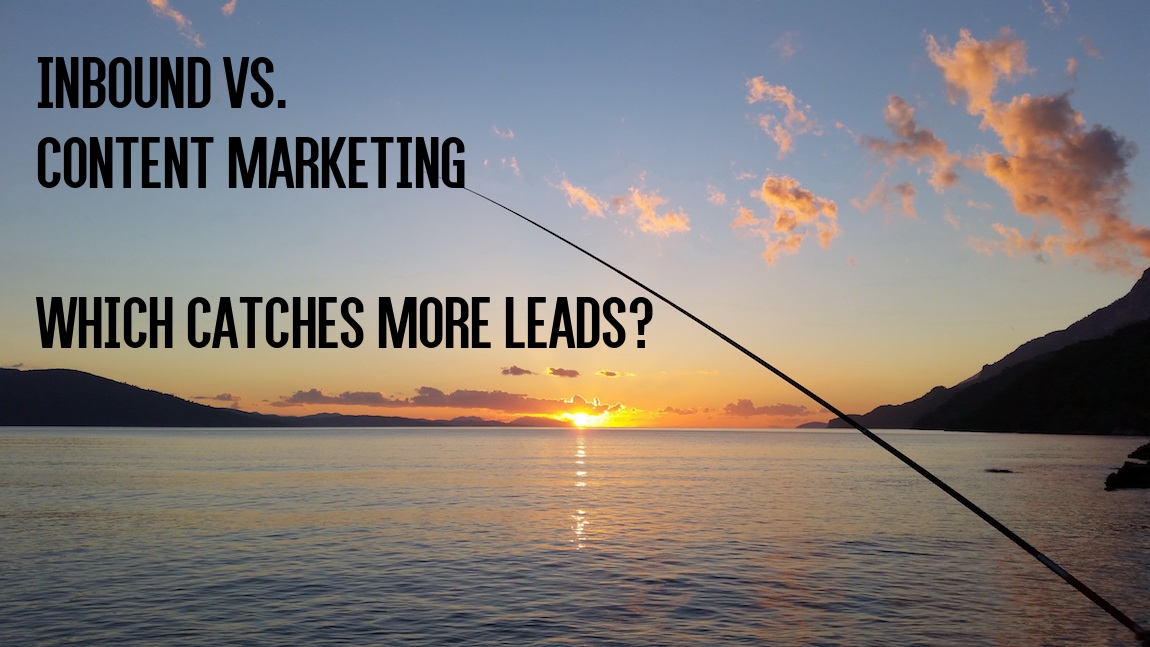Key Content Marketing Stats for Manufacturers in 2017
by MGB2B
 The Content Marketing Institute recently released its annual report: 2017 Manufacturing Content Marketing: Benchmarks, Budgets, and Trends North America. And the results are promising for manufacturers this year. Many who were stuck are starting to find their way through the world of content marketing. And lots of manufacturers are starting to see results.
The Content Marketing Institute recently released its annual report: 2017 Manufacturing Content Marketing: Benchmarks, Budgets, and Trends North America. And the results are promising for manufacturers this year. Many who were stuck are starting to find their way through the world of content marketing. And lots of manufacturers are starting to see results.
Here Are 6 Key Content Marketing Stats for Manufacturers — and What They Mean for Your Business:
- 85% of Manufacturing Marketers Are Using Content Marketing to Reach Their Prospects.
What that means for you: Content marketing may not be part of your marketing plan, but it is likely something your competitors are doing. If you are using content marketing, it’s important that you differentiate your content. The content you are producing should resonate with the audience but also reflect your brand’s strategic positioning in order to accomplish this.
- Of Those Who Don’t Use Content Marketing, 53% Plan to Do So Within the Next Year.
What that means for you: Again, if content marketing is not part of your marketing strategy, 2017 is the year to get it going. Your competitors are likely already on the content train.
- 92% of Content Marketers in the Manufacturing Sector Use Email to Distribute Content.
What that means for you: There are many ways to distribute content, but email is one of the most frequently used. What’s more, manufacturers in particular have success at getting their prospects to open their emails. So having an email program is a must, but it’s also important to know how to do it right. That includes everything from proper segmentation of your lists to intuitive design based on the user experience.
- 63% Proclaim SEM to Be the Most Effective Method for Promoting Content.
What that means for you: Along with email, Paid Search should be among your distribution tactics when you’re ready to put your content out there. It’s an effective way to get new leads — one that can be fine-tuned easily and quickly. You should also consider hiring an SEO Specialist or an agency that can help you with all aspects of Search Engine Marketing — both paid and organic.
- 82% Are Running Print Ads to Promote Their Content.
What that means for you: Advertising in Trade Publications is far from dead. In fact, there are many reasons why you should strengthen your relationship with your trade pub reps. Chief among them — you can score opportunities to promote your content digitally to their lists and drive new leads into your sales funnel.
- 69% of Manufacturers Who Do Content Marketing Attribute Their Success to Good Strategy.
What that means for you: A Content Strategy is one of the most important parts of a successful content program. If you’ve skipped this step, it’s a good idea to go back and make sure you have a plan before you start creating and distributing content in 2017. Make sure your Content Strategy is well-documented so you can measure its success at several points throughout the year.
As you prepare for 2017, Content Marketing is an essential tool to have in your arsenal. If you haven’t already, it’s time to surpass your competitors, and establish yourself as the authority in your industry.
Continue Reading
B2B Monday Myth: Content Marketing and Inbound Marketing Are the Same Thing
by MGB2B
The Myth: Content Marketing and Inbound Marketing Are the Same Thing.
The Truth: Content Marketing Expands Well Beyond Just Inbound.
One mistake marketers make fairly often is confusing Content Marketing with Inbound Marketing. They see them as one and the same, when in reality Inbound Marketing is just a child of Content Marketing. Let’s take a closer look.
First off, when we talk about content, here are some examples of what we’re referring to:
- Blog Posts
- Podcasts
- White Papers
- eBooks
- Social Media Posts
- Videos
Content Marketing is simply how you distribute content to your target audience. The way you do it can make or break your marketing campaign. Sometimes, Content Marketing takes the form of Inbound Marketing.
So, How Does Inbound Marketing Work?
Inbound marketing is a simple concept. It generates strong leads for B2B brands because it lets the buyer find you instead of you hunting them down as you would with Outbound Marketing. It is passive marketing – you leave your fishing hook in the water and wait for the fish to come and take your bait. So the goal is to make your bait as attractive as possible by optimizing the content on your website and social media sites. If your content is good, hopefully others will use them as inbound links on their sites. This gives you credibility, not only to prospects, but to Google, who will then be more likely to put you at the top of the search list.
The goal of Inbound Marketing, is once you draw a prospect to your content, you can capture their information, and they become a lead that you can now contact and (hopefully) convert.
But this is only one way to use content.
Okay, What About Content Marketing?
Content Marketing encompasses more than just Inbound. It’s been around much longer than you might think. John Deere started doing it back in 1895 by creating The Furrow, an agricultural magazine that would appeal to his customers and prospects (millions of them). Walt Disney was a master of Content Marketing as early as 1954. Both the Deere and Disney brands have been distributing their content to mass audiences since long before the Internet was even invented, never mind Inbound Marketing.
But we needn’t put the division line between Inbound and Offline. There are other ways to drive people to your content online that are not considered Inbound Marketing. Optimizing your content can get you hot leads who are searching for what you offer, but Outbound allows you to widen your net a bit. It’s basically marketing as you’ve always known it, but used to drive readers to content instead of to build awareness of your brand. With Outbound, you drive people to your content via:
- Social Media Ads
- Online Display Ads / Retargeting
- Paid Search
- E-blasts via Trade Publications
- Webinars with Relevant Trade Publications
- Email Campaigns (though there is debate as to whether this is considered Inbound or Out)
As you can see, Content Marketing is a wide umbrella, and Inbound a highly effective methodology that falls beneath it. Their goal is the same: to get prospects into your sales funnel. The key is to have good content that can increase the number of leads you get from both your Inbound and Outbound efforts. Try what you think will work best for your target audiences, measure the effectiveness of each piece of your campaign, and fine-tune it until you have a well-oiled Inbound and Outbound Content Marketing machine.
Continue Reading5 Ways U.S. Manufacturers Can Reap the Rewards of Election Season
by MGB2B
As we all know too well, election season is upon us. And whether you’re a staunch conservative, an unbending liberal, or anything in between, manufacturing is an important part of the conversation. In fact, according to Pew Research, the economy is the top issue for Americans in this election. If you watched the first debate, manufacturing came up at least once or twice in the conversation. That’s because, while the U.S. may face obstacles when it comes to manufacturing, it is still one of the most important drivers of our economy.
So how can you capitalize on this?
The key is for manufacturing companies to show Americans what they do for the economy, how they are creating jobs, coming up with new innovations, and driving America forward. A candidate for local, state, or even U.S. office might pick up your positive story and bring it to the public as an example of success (which can be good or bad depending on how people feel about the candidate). And if you’re really lucky, a national news organization may even cover your story.
Here Are 5 Storytelling Tips for Manufacturers during Election Season:
- Blog About It. Brainstorm the ways you contribute to American progress and get a blog post about it (or even a series) up on your website as soon as you can.
- Promote Those Blogs. Once you have them written, distribute your blogs on your social media sites and email them out to your database. Twitter allows you to promote them frequently and use appropriate hashtags so that industry people (and others) will take notice.
- Shop Your Story Out to Trade Pubs. Send a good old fashioned press release to the publications you deal with most, especially the ones who run your ads regularly.
- Shop Your Story Out Beyond Your Own World. A good, human story about the economy is valuable not just to people in your industry, but to bigger news organizations. If it’s a strong story and it’s written well, they might just pick it up.
- Make a Video. Obviously, time is running out to get in on this election, so this may not be an option for you unless you have an in-house team or an agency that can pull off a great video before November. But a video that shows your company’s progress and tells the story about how you are contributing to the American economy can go a long way. And it’s something that can live online long after the election is over. Sending a video to accompany your press release increases the likelihood that your story will grab the attention of news organizations. Who knows? They may even want to use a clip on TV.
You won’t know the possibilities until you try it. So if you truly have a great manufacturing story, and you think it’s time for America to hear it, put it out there. At this point, voters are aching to hear a positive story. You might as well be the bearer of good news.
Continue Reading
